Big Fall In Oil Prices As New Covid Variant Spooks Markets

Oil prices dived more than 5% on Friday as a new Covid-19 variant spooked investors and added to concerns that a supply surplus could swell in early 2022.

Oil prices dived more than 5% on Friday as a new Covid-19 variant spooked investors and added to concerns that a supply surplus could swell in early 2022.
Oil fell with global equities markets on fears the variant, which Britain said scientists considered the most significant found to date, could restrict travel and dampen economic growth and fuel demand.
Investors were also watching China's response to the US release of millions of barrels of oil from strategic reserves in coordination with other large consuming nations, part of its bid to cool prices.
Such a release is likely to swell supplies in coming months, an OPEC source said.
Iranian production was also in focus, with indirect talks due to resume on Monday between Iran and the United States on reviving a 2015 nuclear deal that could lead to the lifting of U.S. sanctions on Iranian oil exports.
However, the failure of Iran and the International Atomic Energy Agency to reach even a modest agreement on monitoring of Tehran's nuclear facilities this week bodes poorly for next week's talks, Eurasia analyst Henry Rome said.
The forecasts cloud the outlook for a Dec. 2 meeting of OPEC and its allies, known as OPEC+, when the group will discuss whether to adjust its plan to increase output by 400,000 bpd in January and beyond.
Reporting by Reuters
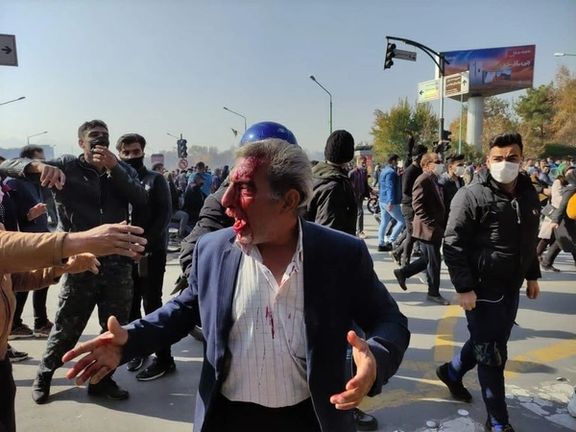
Security forces in Esfahan, Iran's third largest city, blocked roads and anti-riot special forces on motorcycles attacked protesters Friday, firing tear gas.
Videos posted on social media Friday morning show thousands of protesters in the city's dry riverbed and its adjacent boulevards chanting slogans and refusing to leave despite heavy use of tear gas, firing guns in the air and paramilitary and plainclothes motorcyclists driving into crowds. Some social media users claim protesters are being targeted with birdshots.
Farmers in Esfahan province came to the provincial capital two weeks ago and set up camp in the dry Zayandeh Roud riverbed in center of Esfahan, a city of four million, demanding water for irrigation. Last Friday, tens of thousands of city residents joined them in a large protest that authorities did not interfere with, as it was the anniversary of the November 2019 bloody protests. The government probably did not want any bad publicity on the anniversary.
Some videos Friday showed people who have been injured including a young man with blood on his face holding a handkerchief to his eye while shots are heard in the background. In another video an old man is seen also holding a handkerchief to his injured eye while a young police officer tries to help him. "Allow Muslims, the people see this [injury]," the old man who wants people to see his eye repeats
"Fear not, fear not, we are all united," protesters are seen in one of the videos chanting while another video shows some protesters throwing stones, others cheering and booing, and a small group of security forces and plainclothesmen fleeing in the dry riverbed. A third video shows security forces charging against the crowd of protesters on foot and on motorcycles in the riverbed while hundreds lining the banks of the river chant "You have no shame".
Videos also showed crowds shouting "Reza shah, god bless your soul," in reference to the first Pahlavi monarch who reigned from 1925 to 1941.
Other videos show people in the boulevards chanting "Down with the Dictator" and "Death to Khamenei".
In preparation for the protest planned Friday, security forces including riot police and armored vehicles deployed to Esfahan on Thursday and closed some streets to traffic. Earlier on Thursday, security forces attacked the farmers' makeshift camp in the dry riverbed set up two weeks ago and burned their tents, bulldozed the remains, and arrested some protesters. State-run broadcaster (IRIB), however, in a report Thursday morning alleged that "opportunists" were responsible for burning the tents and claimed that some were arrested but no evidence was produced.
State media also reported Thursday that farmers' protests had finished after an agreement with the authorities to resolve their problems. The state-run television said Thursday security forces had only "managed the scene" and dispersed the farmers afters their tents were set on fire by two saboteurs. The political deputy of Esfahan’s governor said Thursday that any further protests would be attributed to “troublemakers” and “those not related to farmers”. Social media users reported Thursday that many people had received text messages from security agencies warning them not to convene where protests were planned to take place Friday.
Protesters have also been chanting in support of unity with the people of the neighboring Chahar Mahal and Bakhtiari Province where the capital Shahr-e Kord has also seen extensive water protests in the past few day. "This is Esfahan, Supporter of Chahar Mahal," they chanted.
The Water Company of Yazd Province Thursday evening said the pipes transferring water from Esfahan to Yazd had been destroyed, leaving Yazd without drinking water. A video posted on Twitter shows a crowd, apparently Esfahan farmers who have broken the pipe before, chanting Allah-u Akbar (God is Great) and water gushing out a pipe in an area outside the city. The government in recent years has diverted the Zayandeh Roud waters to Yazd, an arid region, to develop industries.
In Shahr-e Kord Thursday hundreds of protesters chanted behind the closed gate of the provincial governor's office, demanding the governor to come out of the building, booing security forces and ripping a banner of the Basij paramilitary, an arm of the Revolutionary Guards (IRGC).
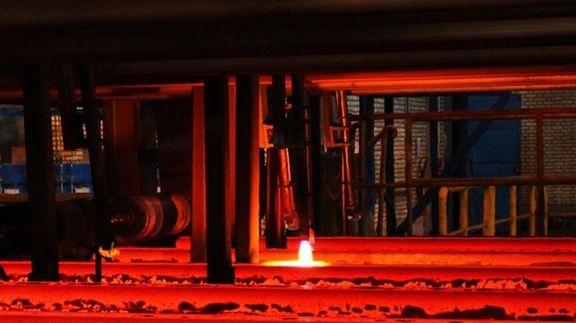
Iran’s steel production fell by 15 percent in October, following smaller declines earlier in the year resulting from lack of electricity, after years of growth.
The World Steel Association in its latest report showed Iran as the tenth largest producer in the world after Brazil but with a large drop, which dragged down overall steel production in the Middle East.
Iran has been suffering from an acute electricity shortage in recent years as its natural gas production, feeding power plants, fails to keep up with domestic demand. Lack of investments and technology resulting from years of various sanctions have gradually reduced output in operating gas fields.
Iran has been counting on exporting more steel and other metals, including copper and iron ore to reduce dependance on oil exports. The drop in steel production would hurt the government’s foreign currency revenues at a time when US sanctions have reduced its oil export income.
Iran produced around 29 million tons of steel in 2020, which was 16 percent higher than in 2018 and 141 percent more than a decade earlier.
Iran’s Steel Producers’ Association has also confirmed that production of metals fell between 3-13 percent since March 21, the beginning of the current Iranian year.
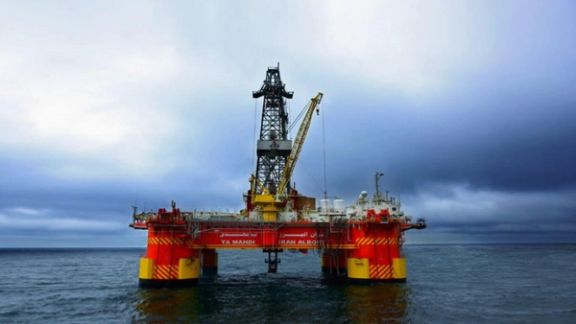
With a potential output worth $450 billion over its first 20 years, Iran’s Chalous gas field in the Caspian Sea, raises issues of both finance and where the gas might sell.
The field, whose discovery Iran proclaimed in June and which has perhaps 3.5 trillion cubic meters (m3) of gas, reportedly is part of discussions with Russia over a strategic cooperation agreement.
Europe seems an obvious market, and one where Russia already has a large footprint. With demand rising in cold weather, European buyers are struggling due to a lack of supply in both natural gas and LNG (liquefied natural gas).
Iran currently exports gas to Turkey, Iraq, and Armenia. Exporting gas to Europe is a main goal of Iran’s oil ministry even though the necessary infrastructure is not in place.
But Iran is a long way from being able to meet Europe’s growing needs. As the Chalous field is under deep water in the Caspian, extraction requires finance and advanced technology, which Iranian companies lack. Any western European, Chinese, and Russian companies could be deterred by possible punitive US action under ‘maximum pressure’ sanctions. The China National Petroleum Company (CNPC), like France’s Total, left its contract to develop phase 11 of South Pars, Iran’s gas-field in the Persian Gulf, in fear of United States ‘maximum pressure’ sanctions.
Moscow’s Gas Calculations
Russia’s own gas exports to Europe are caught up in Moscow’s complex calculations. Russia supplies around half of the gas imported by the EU, and as much as 90 percent of the gas supplied to some countries. Russia also plans to export LNG to Europe.
Due to the energy crisis, Russian gas is expected to flow within months through the 1,225km (760-mile), €10 billion Nord Stream 2 pipeline, although its approval was recently suspended by Germany's energy regulator, leading to a 17 percent jump in gas prices in the European Union. The Kremlin is doubly keen on Nord Stream 2 because it could transit Russian gas directly to Germany under the Baltic Sea and so avoid paying transit fees to Ukraine.
In the meantime, a daily supply of only 30 million m3 was booked by Gazprom from the Yamal Peninsula, north-west Siberia and a major area of gas reserves, to supply by pipeline to Europe in November, well below a possible 86.5 m3. Gazprom has made no bookings though the Ukrainian pipeline.
Russia’s management of supplies to Europe’s suggests its deal with Iran over Chalous − which according to Oilprice.com would for 20 years allocate 40 percent of production to Russia, 28 percent to China, and 32 percent to Iran − might Moscow managing a potential rival rather than a sales bonanza for Tehran.
Surging Chinese Demand
Might China, where electricity shortages have pushed some provinces to implement power rationing, be a better market for Iranian gas?
With the relative easing of the Covid-19 pandemic, demand has surged in China. In the first six months of 2021, Beijing’s LNG imports exceeded those of Japan, and are likely to do so for the rest of the year. At the end of September, Inter RAO – a Russian power generator – was asked by Chinese authorities to increase supplies to China.
Beijingis well diversified, looking to a variety of countries to meet its energy needs. Around 16 percent of its oil comes from Saudi Arabia, 16 percent from Russia, and 11 percent from Iraq.
Last month the US signed a new agreement to export LNG to China. In 2019, when tariffs were 25 percent, only two US LNG cargoes were shipped to China, but after China lowered tariffs to 10 percent, US LNG exports to China averaged 0.6 billion cubic feet a day (17 million m3) in 2020.
Falling South Pars Output
But even if the Chalous field gas is extracted in the future, its gas could not be easily exported to China or Europe. At present, gas from Iran’s South Pars field goes 70 percent to meet domestic demand, and the field is already entering its second half of life.
According to some estimates, South Pars production will fall annually after 2024 by 28 million m3 a day. To prevent the decline in gas production in South Pars, an investment of $30 billion is required.
High domestic consumption and continuing US sanctions have plunged Iran into an energy squeeze. Until the threat of US sanctions is eased, Iran alone will struggle to extract the reserves of any new oil and gas field it discovers. And as time passes, countries' attention to the energy transition process and the Glasgow environmental agreement will lead countries to switch away from fossil fuels to renewables.

Security forces have deployed in the Iranian city of Esfahan on Thursday after government agents attacked protesting farmers in their camp earlier in the day.
Reports and social media videos from Esfahan show that special riot police armored cars are visible throughout the city and some streets have been closed to traffic. Farmers and Esfahan residents have called for a large protest on Friday.
A large protest of tens of thousands of people took place last Friday in the city center, where people gathered on the dry riverbed of Zayandeh Roud, Esfahan’s iconic river, which has been dry for most of the last decade because of draught and water diversion by the government.
Farmers and residents demand water to flow again and the river come back to life, providing much-needed irrigation for communities around the historic city.
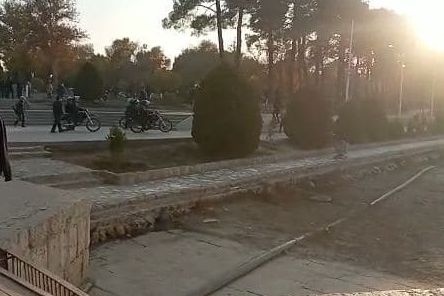
Early Thursday, plainclothesmen and security forces attacked a makeshift camp set up by farmers two weeks ago on the dry riverbed. They destroyed and set fire to the farmers’ tents and arrested many protesters. They also brought heavy machinery to cleanse the scene of any signs of the camp and the fire.
Residents reported a heavy presence of security forces Thursday afternoon, possibly in preparation to intervene on Friday to prevent a larger gathering.
Internet connection has also been disrupted in the city center, usually a sign of possible crackdown as authorities do not want images to be published online showing force being used against citizens.
Some reports say security forces arrested around 50 farmers, but government media says most were released later.
The political deputy of Esfahan’s governor claimed that security forces did not use any force against the camping farmers, and they were simply dissuaded through “conversation” to disperse. He said that from now on, any protest would be involving “troublemakers” and “not related to farmers”.
His remarks could be another sign of authorities preparing to crackdown if residents of the city congregate on Friday.
Until a few days ago, the government tried to show that it tolerates protests to water scarcity and argued that farmers and citizens had a valid grievance, which was not political. The interior minister Ahamd Vahidi, however, said Thursday that water protests were an attempt “by the enemy to sow discord”, and the Islamic Republic should allow repeat of any protests.
The sudden change in tone could be related to the passing of an important anniversary. November 15 marked the second anniversary of the 2019 anti-regime protests when security forces killed hundreds of unarmed demonstrators across the country. The government probably did not want a repeat of violence to coincide with a sensitive date, which could fuel unrest in other parts of the country.
Social media users reported that many people received text messages from security agencies warning them not to show up at any protest location.
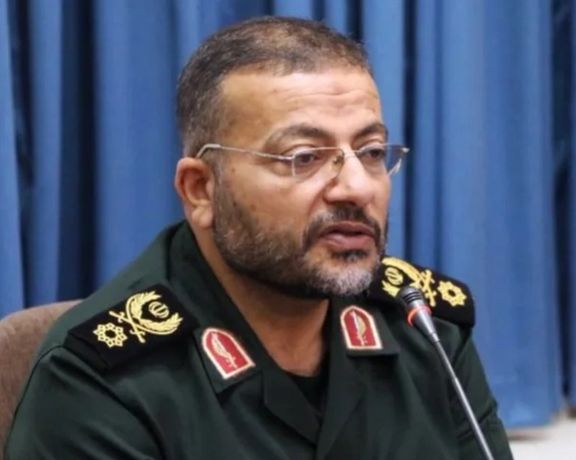
The general commanding Iran’s paramilitary Basij, said Thursday that his social media activists would be given equipment and technical support to boost their work.
Brigadier General Gholamreza Soleimani was speaking to Defa Press, news agency of the armed forces, two days after he told the Basij Digital Content Creation event in Tehran that a “people's network in cyberspace…means that the Iranian nation has deployed technology in the battlefield.”
In September Soleimani said that an “era of hit-and-run in cyberspace" was over and that the Basij needed a more systematic approach.
Ali Fadavi, deputy commander of the Revolutionary Guards Corps, which supervises the Basji, in a speech Wednesday warned Basij members of that the Islamic Republic is under attack and cultural “war…happening inside our houses and in the mobile phones in our pockets and our hands.” He called on them to "enter the battlefield."
Organized trolling has been for some time a feature of Iranian politics, helping to spread untruths and unsubstantiated allegations. Iranian authorities, including Supreme Leader Ali Khamenei refer to state-sponsored social-media activists as "cadets of the soft war.”
Iranian activists often allege that the IRGC and other state bodies sponsor organized trolls on social media to anonymously threaten, attack and discredit dissidents and to disseminate fake news.
The Basij has around 5 million members, according to leading academic authority Saeed Golkar, with around 200,000 cadres and special Basij, who can act as a paramilitary support to police and security forces. Thousands of members are active on social media to counter news, information and critical opinions disseminated on social-media including by Persian-speaking media abroad.
Besides maintaining extensive network of social media activists, the Islamic Republic also devotes an unknown measure of resources to control the Internet, block thousands of websites and ban foreign social media platforms such as Facebook, You Tube and Twitter. Almost every Iranian has to resort to VPNs and other tools to have access to blocked sites.
A recent study published by the Media Quarterly in Iran shows that the daily readership of Iranian newspapers and the audience of state television have plummeted dramatically during the past two years due to various factors including the loss of public trust, censorship and greater popularity of online media and social media as a source of news and information.
The Telegram messaging application, for instance − which is blocked but accessed through VPNs and anti-filtering software − has over 49 million users in Iran with at least 150 channels having, over 1 million subscribers. Instagram, which is not blocked, has a similar number of users. Many Iranian politicians and their supporters, including former principlist president Mahmoud Ahmadinejad, as well as a range of activists, have popular channels on Telegram and Instagram accounts.